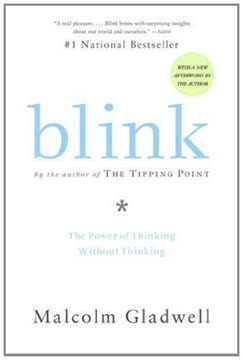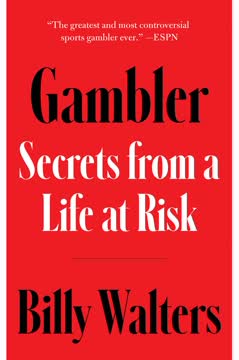Key Takeaways
1. Our perception of risk is often distorted by psychological biases
Gut only knows that it is seeing vivid incidents and feeling strong emotions and these things satisfy the Example Rule and the Good-Bad Rule.
Two systems of thought. Our brains have two systems for assessing risk: the intuitive, emotional "Gut" and the logical, analytical "Head." Gut relies on mental shortcuts like the Example Rule (easily recalled examples seem more likely) and the Good-Bad Rule (negative emotions make risks feel bigger). These shortcuts worked well for our ancestors but can lead us astray in the modern world.
Cognitive biases. Several cognitive biases distort our risk perception:
- Availability bias: We overestimate risks that are easily remembered or imagined
- Anchoring effect: Initial numbers or ideas heavily influence our judgments
- Optimism bias: We underestimate risks to ourselves compared to others
- Hindsight bias: Past events seem more predictable than they were
Irrational reactions. These biases can cause us to:
- Overreact to vivid but rare risks (e.g. shark attacks, terrorism)
- Underestimate common but mundane risks (e.g. heart disease, car accidents)
- Make poor decisions based on emotional rather than statistical reasoning
2. Media and marketing exploit our fears for profit and attention
Fear sells. Fear makes money. The countless companies and consultants in the business of protecting the fearful from whatever they may fear know it only too well.
Fear as a marketing tool. Many industries profit from stoking our fears:
- Security companies sell alarm systems and surveillance equipment
- Pharmaceutical companies promote awareness of diseases and disorders
- Politicians use fear of crime and terrorism to win votes
- News media boost ratings with sensationalized coverage of threats
Attention economy. In a world of information overload, fear-inducing stories stand out:
- Vivid, emotional stories about dangers get more clicks and shares
- Complex statistics about safety improvements are often ignored
- The media focuses on rare, dramatic events rather than long-term trends
Feedback loops. When the media amplifies fears, it creates a cycle:
- A threat receives outsized coverage
- Public concern grows
- More coverage is devoted to the threat
- Fears are reinforced and amplified
This process can turn minor risks into major public concerns, divorced from statistical reality.
3. We are safer and healthier than ever, yet increasingly anxious
Humans in the developed world have undergone "a form of evolution that is unique not only to humankind, but unique among the 7,000 or so generations of humans who ever inhabited the earth."
Dramatic progress. By almost every measure, life has improved dramatically:
- Life expectancy has nearly doubled in the past century
- Child mortality has plummeted
- Many deadly diseases have been eradicated or controlled
- Violence and war have declined significantly
Persistent anxiety. Despite these improvements, many people feel the world is more dangerous:
- 24/7 news coverage makes threats seem omnipresent
- Social media amplifies fears and spreads misinformation
- Complex global challenges (climate change, terrorism) create uncertainty
Paradox of progress. As we solve old problems, new concerns emerge:
- Having conquered many deadly diseases, we worry about trace chemicals
- With basic needs met, we focus on more abstract threats
- Increased control over our lives makes remaining risks feel more threatening
4. Our Stone Age brains struggle with modern risk assessment
We have brains that believe, somewhere in their deepest recesses, that an image of our children is our children, that a piece of fudge shaped like dog poo is dog poo, and that a daydream about winning the lottery makes it more likely we will win the lottery.
Evolutionary mismatch. Our brains evolved to handle the risks of a prehistoric world:
- Immediate, visible threats (predators, rival tribes)
- Small social groups and limited information
- Relatively simple cause-and-effect relationships
Modern complexity. Today's risks are often:
- Abstract and invisible (radiation, economic instability)
- Global in scale and long-term in nature
- Involving complex systems and statistical probabilities
Cognitive limitations. Our innate risk assessment tools struggle with:
- Very large or small numbers (e.g. one-in-a-million chances)
- Long-term, gradual threats (e.g. climate change)
- Distinguishing between correlation and causation
- Balancing multiple, competing risks
To make good decisions in the modern world, we need to recognize these limitations and supplement our intuition with data and careful analysis.
5. Confirmation bias reinforces our existing beliefs about risks
Once a belief is in place, our brains will seek to confirm it.
Selective attention. We pay more attention to information that supports our existing views:
- Seek out news sources that align with our beliefs
- Remember examples that confirm our fears
- Discount or ignore contradictory evidence
Interpretation bias. We interpret ambiguous information in ways that support our beliefs:
- See patterns where none exist
- Attribute negative outcomes to feared causes
- Explain away evidence that challenges our views
Self-reinforcing cycle. Confirmation bias creates a feedback loop:
- Form an initial belief about a risk
- Selectively attend to confirming information
- Interpret new data to support the belief
- Become more confident in the original belief
- Repeat
This process can entrench fears and make them resistant to change, even in the face of contradictory evidence.
6. Group dynamics amplify fears and create feedback loops
Alan convinces Betty, and that persuades Carl, which then settles it for Deborah.
Social proof. We often look to others to determine what to believe:
- If many people are worried about a risk, we assume it must be serious
- We trust the judgment of our social group over abstract statistics
Group polarization. When like-minded people discuss risks, their views tend to become more extreme:
- Sharing information reinforces existing beliefs
- People want to be seen as committed to the group's values
- Dissenting voices are often marginalized
Cascading fears. Fears can spread rapidly through social networks:
- A few influential people become concerned about a risk
- They share their concerns with others
- The concern spreads, gaining credibility as it spreads
- Media coverage amplifies the growing fear
- The risk becomes a major public concern, regardless of its actual severity
These social dynamics can turn minor risks into major panics, as seen in cases like vaccine fears or Y2K preparations.
7. Putting risks in perspective requires conscious effort
To protect ourselves against unreasoning fear, we must wake up Head and tell it do its job. We must learn to think hard.
Overriding intuition. To accurately assess risks, we often need to set aside our gut feelings:
- Recognize when emotions are clouding our judgment
- Seek out objective data and expert analysis
- Compare risks to other, more familiar hazards
Key questions. When evaluating a risk, ask:
- What's the actual probability of harm?
- How severe would the consequences be?
- How does this compare to other risks I accept?
- What are the potential benefits of taking the risk?
- What are the costs of trying to avoid the risk?
Balanced approach. Aim for a middle ground between paranoia and complacency:
- Don't ignore real risks, but don't obsess over unlikely threats
- Consider both the costs and benefits of safety measures
- Be willing to update your views as new information becomes available
By consciously engaging our analytical thinking, we can make more rational decisions about which risks to worry about and which to accept.
8. Terrorism fears are often disproportionate to actual threats
If survival in life is a matter of dealing with an often inhospitable physical universe, and [of] dealing with members of our own species, both friendly and unfriendly, there would be a general benefit to be derived from imaginatively exercising the mind in order to prepare it for the next challenge.
Statistical reality. The actual risk of dying in a terrorist attack is extremely low:
- In the U.S., the lifetime risk is estimated at 1 in 3.5 million
- More Americans die each year from drowning in bathtubs than from terrorism
Psychological impact. Terrorism is particularly frightening because it:
- Is intentional and malicious, unlike natural disasters
- Generates vivid, memorable images
- Creates a sense of ongoing threat and uncertainty
Political exploitation. Fear of terrorism is often amplified for political gain:
- Politicians use it to justify increased security measures and military action
- Media coverage is disproportionate to the actual threat
- Counterterrorism spending far exceeds that for other, more common risks
While terrorism is a real threat that deserves attention, our fears are often out of proportion to the actual danger, leading to misallocation of resources and unnecessary anxiety.
9. Chemical and environmental fears are frequently exaggerated
People have this impression that if it's natural, it can't be harmful, and that's a bit naive.
Chemophobia. Many people have an irrational fear of synthetic chemicals:
- Assume "natural" means safe and "artificial" means dangerous
- Worry about trace amounts of contaminants
- Ignore the fact that natural substances can be highly toxic
Dose matters. The fundamental principle of toxicology is often overlooked:
- Any substance can be harmful in large enough quantities
- Many "toxic" substances are harmless or even beneficial in small doses
- The body has mechanisms to deal with low levels of many contaminants
Risk trade-offs. Efforts to eliminate one risk can create others:
- Banning certain pesticides could lead to food shortages or higher prices
- Avoiding vaccines due to fear of side effects increases disease risk
- Over-sanitizing environments may weaken immune systems
A more balanced approach recognizes that:
- Both natural and synthetic substances can be harmful or beneficial
- The dose makes the poison
- We need to weigh risks against benefits and consider unintended consequences
10. Progress has dramatically reduced many historical risks
We are the healthiest, wealthiest, and longest-lived people in history. And we are increasingly afraid.
Historical perspective. Many risks that terrified our ancestors have been largely eliminated:
- Infectious diseases that once killed millions are now rare or treatable
- Famine and malnutrition have been greatly reduced in much of the world
- Workplace safety has improved dramatically
- Violence and war have declined significantly over the centuries
Ongoing progress. We continue to make advances in safety and health:
- Medical breakthroughs are extending lives and improving quality of life
- Technology is making transportation, workplaces, and homes safer
- Early warning systems reduce the impact of natural disasters
- Global cooperation addresses transnational threats
New challenges. As old risks recede, we face new ones:
- Climate change and environmental degradation
- Emerging infectious diseases
- Risks from new technologies (AI, biotechnology, etc.)
- Cybersecurity threats
While we shouldn't ignore these new challenges, it's important to recognize how far we've come and maintain perspective on the relative severity of different risks.
Last updated:
FAQ
What's The Science of Fear about?
- Exploration of Fear Psychology: The Science of Fear by Daniel Gardner examines why humans often fear things that are statistically less dangerous. It explores how emotions, media, and societal influences shape our perceptions of risk.
- Impact of Media and Politics: Gardner discusses how media sensationalism and political agendas manipulate public perception, leading to irrational fears and potentially dangerous behaviors.
- Cultural Context of Fear: The book addresses how modern society is increasingly risk-averse despite living in a safer world, suggesting that understanding our fears can lead to better decision-making.
Why should I read The Science of Fear?
- Insightful Analysis: The book provides a compelling analysis of how fear influences our daily lives and decision-making processes, using psychological research and real-world examples.
- Practical Applications: Readers can apply insights to improve their understanding of risk and fear, helping to mitigate unnecessary anxieties and promote rational decision-making.
- Cultural Relevance: In an age where fear is often exploited, the book encourages critical thinking about the information we consume and the fears we hold.
What are the key takeaways of The Science of Fear?
- Fear vs. Reality: Our fears often do not align with actual risks, as many things we fear are statistically less dangerous than everyday activities.
- Two Systems of Thought: The book introduces System One (intuitive and emotional) and System Two (analytical and rational), explaining how they interact and influence our fears.
- Influence of Stories: Gardner highlights the power of storytelling in shaping perceptions of risk, where personal stories and vivid imagery can overshadow statistical realities.
What are the best quotes from The Science of Fear and what do they mean?
- “The thing I fear most is fear.”: This quote suggests that irrational fear can paralyze us and lead to poor decision-making, emphasizing that fear itself can be more damaging than actual threats.
- “Fear is implanted in us as a preservative from evil; but its duty, like that of the other passions, is not to overbear reason, but to assist it.”: This highlights the dual nature of fear, which should guide rather than override rational thought.
- “Fear is the biggest danger we face.”: This encapsulates the book's theme that fear can lead to irrational decisions and actions, potentially causing more harm than the risks themselves.
How does Daniel Gardner explain the concept of the availability heuristic in The Science of Fear?
- Definition of Availability Heuristic: Gardner describes it as a mental shortcut that relies on immediate examples when evaluating a topic, leading to overestimating the likelihood of memorable or emotionally charged events.
- Impact on Risk Perception: This heuristic can skew our perception of risk, making us fear highly publicized events while downplaying more common risks.
- Real-World Examples: Gardner uses media coverage and public reactions to illustrate how the availability heuristic operates, such as avoiding flying after high-profile incidents.
What role does media sensationalism play in shaping our fears according to The Science of Fear?
- Amplification of Fear: Gardner argues that media sensationalism amplifies public fears by focusing on rare but dramatic events, creating a distorted view of reality.
- Fear as a Marketing Tool: Fear is often used by companies and politicians to drive engagement, leading to misguided policies and personal choices.
- Consequences of Misplaced Fear: Misplaced fear can lead to increased anxiety and avoidance behaviors, which can be more dangerous than the threats themselves.
How does The Science of Fear address the concept of confirmation bias?
- Definition of Confirmation Bias: Gardner explains it as the tendency to search for and remember information that confirms preexisting beliefs, leading to distorted perceptions of risk.
- Impact on Decision-Making: Confirmation bias can affect decision-making, particularly in the context of fear, as people may ignore evidence that contradicts their fears.
- Real-Life Implications: Gardner provides examples of how confirmation bias manifests in various contexts, hindering rational discourse and leading to polarized opinions.
What is the significance of group polarization in the context of fear as discussed in The Science of Fear?
- Definition of Group Polarization: Gardner defines it as the phenomenon where group discussions lead to more extreme positions among members, particularly regarding fears.
- Effects on Public Opinion: Group polarization can amplify societal fears, leading to collective anxieties and calls for action that may not be warranted by actual risks.
- Examples of Group Dynamics: Gardner provides examples of how group polarization has influenced public reactions, leading to widespread panic and irrational decision-making.
How does The Science of Fear explain the relationship between risk perception and emotional response?
- Emotional Influence on Risk: Emotional responses significantly shape our perceptions of risk, with fearful events being remembered more vividly, leading to exaggerated senses of their likelihood.
- Role of the Amygdala: The amygdala processes fear and emotional responses, triggering reactions that can override rational thought and heighten perceptions of risk.
- Implications for Decision-Making: Understanding the emotional underpinnings of risk perception is crucial for informed decisions, helping to mitigate irrational fears.
How does The Science of Fear suggest we can overcome irrational fears?
- Awareness of Cognitive Biases: Becoming aware of biases like the availability heuristic and confirmation bias can help individuals recognize when their fears are irrational.
- Engaging with Data: The book encourages engaging with data and scientific research to evaluate risks, grounding decisions in evidence rather than emotions.
- Promoting Open Dialogue: Gardner advocates for open dialogue about fears and risks, allowing for diverse perspectives and critical examination of beliefs.
What does The Science of Fear say about the perception of drug risks?
- Cultural Context of Drug Use: Cultural attitudes shape perceptions of drug risks, with alcohol often viewed positively while illicit drugs are demonized, despite relative dangers.
- Misleading Statistics: Public perceptions of drug risks are often exaggerated, with fear-driven campaigns leading to misconceptions about actual dangers.
- Impact of Media Campaigns: Anti-drug campaigns often rely on sensationalism, distorting public understanding and creating a culture of fear rather than informed decision-making.
How does The Science of Fear relate to the concept of disease mongering?
- Pharmaceutical Industry Tactics: Gardner discusses how the industry exaggerates health risks to create markets for products, leading to unnecessary anxiety and over-medication.
- Public Perception Manipulation: Health campaigns can manipulate perception by framing normal health variations as diseases needing treatment, creating fear around health issues.
- Ethical Concerns: Gardner raises ethical questions about prioritizing profit over public health, encouraging skepticism of health messaging.
Review Summary
The Science of Fear explores why modern society is plagued by irrational fears despite living in the safest era. Gardner examines how our brains process risk, influenced by evolutionary psychology and exploited by media and politicians. Readers found the book insightful, well-researched, and relevant, praising its analysis of topics like terrorism, health scares, and crime. Many recommended it as essential reading for understanding fear's impact on decision-making. Some critics found it repetitive or biased, but most appreciated its message of putting risks into perspective.
Similar Books









Download PDF
Download EPUB
.epub digital book format is ideal for reading ebooks on phones, tablets, and e-readers.




